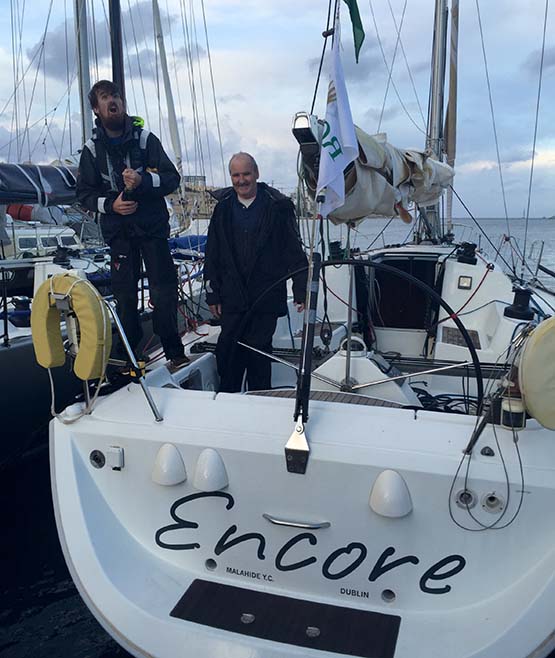Displaying items by tag: First 407
Dermot & Paddy Cronin Are Afloat.ie Sailors Of The Month: October
Malahide father-and-son crew of Dermot (63) and Paddy (31) Cronin are the Afloat.ie Sailors of the Month for October after their clearcut win by almost two hours in the IRC Double-Handed Division in the 606-mile Rolex Middle Sea Race.
Sailing their keenly-campaigned First 40.7 Encore, Team Cronin tackled conditions and the opposition as though they were a fully-crewed boat. And though overall it proved to be a race which suited boats around the 50ft mark, the 40ft Encore was very much in contention in her open Class 6 against racers sailed by numerous experienced crews, placing sixth overall out of 18 boats.
This pattern of being a third of the way from the front was continued in the total fleet of 102 contenders, as they placed 37th in an impressive turnout which included all the best offshore racers in the Mediterranean, and such noted international stars as George David’s Rambler 88 (due in Ireland next June in the Round Ireland Race 2016) and the Maxi 72 Momo, which dominated the big boats in the Fastnet Race.
It says everything about the skill and dedication with which Dermot and Paddy raced that we find ourselves easily making comparisons with their showing against the fully-crewed boats, whereas the real story is that they won the Double-Handed Division with plenty of time in hand.

It seemed almost too good to be true, but it really happened……Paddy and Dermot Cronin back in Valetta find they’ve won the Rolex Middle Sea Race Double-Handed IRC Division with nearly two hours to spare.






















